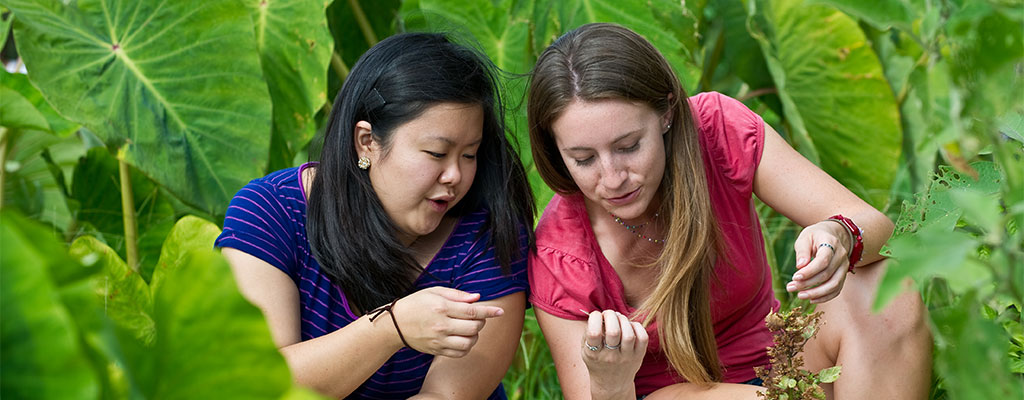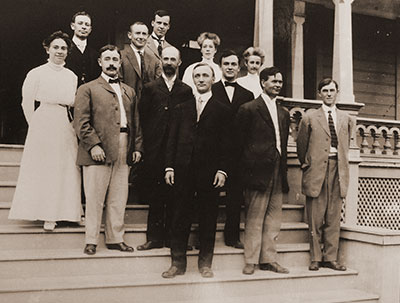
The University of Hawaiʻi System includes 10 campuses and educational, training and research centers across the Hawaiian Islands. As the public system of higher education in Hawaiʻi, UH offers unique and diverse opportunities.
Areas of Excellence
International Advantage
Hawaiʻi position between east and west, in the middle of the Pacific, creates opportunities for international leadership and influence. Asia/Pacific expertise permeates the university’s activities.
Location
The 10 UH campuses and educational centers on six Hawaiian Islands provide opportunities for both learning and recreation.
Opportunity
UH academic offerings range from certificate and vocational through doctoral programs.
Economic Development
UH is the state’s leading engine for economic growth and diversification, stimulating the local economy with jobs, research and skilled workers.
Campuses and Educational Centers
Maui, Molokaʻi, Lanaʻi
University of Hawaiʻi Fast Facts
Enrollment
Total Enrollment: 50,418
Undergraduate: 45,389
Graduate: 5,029
Enrollment Status
Full-time: 49.2%
Part-time: 50.8%
Residency
Hawaiʻi: 80.3%
U.S. Mainland: 14.6%
U.S. Affiliated: 1.0%
Foreign: 3.7%
Unknown: 0.4%
Age and Gender*
Average: 24.2
Men: 41.3%
Women: 57.0%
* full-time students
Pell Grant Recipients*
38%
* eligible, full-time students
Awarded in Fall 2023
Student Diversity (full-time students)
Faculty Diversity*
Figures from the Institutional Research, Analysis & Planning Office, Fall 2024
* Faculty Diversity, Fall 2022
Mission and Purpose
The primary mission of the university is to provide environments in which faculty, staff and students can discover, examine critically, preserve and transmit the knowledge, wisdom, and values that will help ensure the survival of present and future generations with improvement in the quality of life.
In carrying out that mission, it is the basic purpose of the university to afford all qualified people of Hawaiʻi an equal opportunity for quality college and university education at both undergraduate and graduate levels.
As the only provider of public higher education in Hawaiʻi, the university embraces its unique responsibilities to the indigenous people of Hawaiʻi and to Hawaiʻi’s indigenous language and culture. To fulfill this responsibility, the university ensures active support for the participation of Native Hawaiians at the university and support vigorous programs of study and support for the Hawaiian language, history, and culture.
Within its unique geographical location, the university will serve as a leader in how its stewards the resources of the islands and the world for the benefit of all. The university shall be a global leader and model for the integration of sustainability throughout its teaching, research, operations, and public service. The university recognizes than an important knowledge base in sustainable island systems resides in the indigenous people of Hawaiʻi and all those for whom Hawaiʻi is home. The university commits to consult with local cultural practitioners and sustainability experts on best practices in sustainable resource allocation and use for the well-being of our communities, our state, and the world. Critical resources include energy, food, water, land and sea as they are integrated with the relationships of family, culture, community, justice, work, and economy in the present and future.
From Regent’s Policy 4.201
History

In 1907, the Hawaiʻi Territorial Legislature established the College of Agriculture and Mechanic Arts in Honolulu under terms of the U.S. land grant legislation.
Since then, what began as a college of ten students and 13 faculty members has evolved and expanded to a 10-campus system spanning the Hawaiian Islands. The University of Hawaiʻi has grown and responded through the years to the research and cultural needs of its educational community, the State of Hawaiʻi and beyond.
View a timeline of the University of Hawaiʻi and its development over more than a century.
Featured video: UH System news and events
Contact, Location and Consumer Information

University of Hawaiʻi
2444 Dole Street
Honolulu, HI 96822
(808) 956-8111
Need more info? See an overview of each of our 10 campuses.

